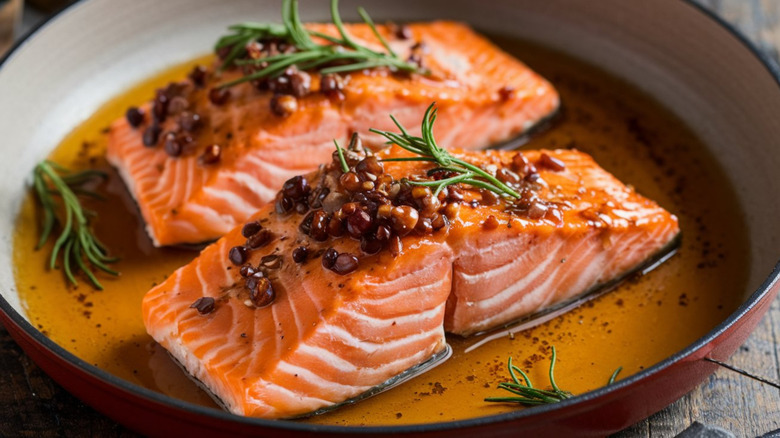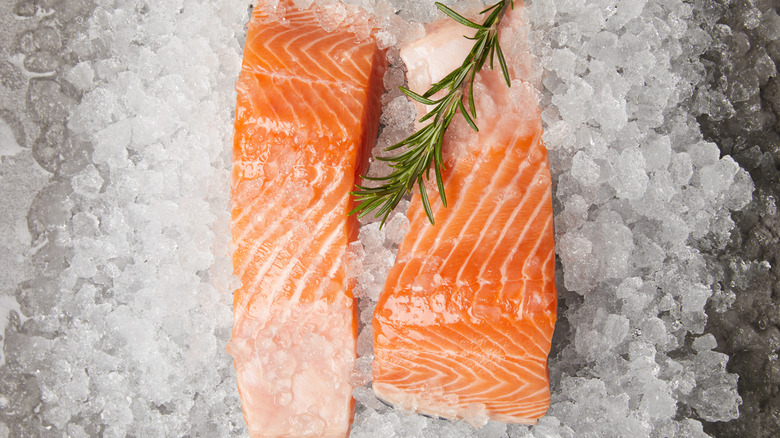The Case For Cooking Salmon Straight From Frozen
We've all had those busy days when you suddenly realize, when it's time to get dinner together, that you forgot to thaw what you planned to make. The good news is that if you have frozen salmon, you're covered — you can cook it right out of the freezer without having to wait for it to thaw. But this hack doesn't have to just be for when you're in a pinch. Robert DiGregorio, Director of Seafood Quality at FultonFishMarket.com, shared with The Takeout how you can cook salmon straight from the freezer any night of the week.
"There are so many reasons I love this method," DiGregorio told us, "but the biggest one is how convenient it is — no thawing needed, just throw that frozen salmon straight into the oven." He also described how the technique that he said makes dinner "effortless" can actually benefit the fish. That's because "cooking it from frozen keeps the fish super juicy because it holds onto more moisture."
DiGregorio's preference for cooking frozen salmon is in the oven. "I love it because you can have dinner on the table in about 20 minutes," he said, adding that it's "always perfect every time." He suggests simply baking the frozen salmon in a 450 degrees Fahrenheit oven for around eight minutes. "Then, remove it, season with your favorite spices, and bake for an additional 11 to 12 minutes." Let your salmon rest for a few minutes before digging in so it doesn't overcook.
Tips for cooking frozen salmon and more ways to do it
You can make any type of salmon from frozen, including mild Coho, which can appeal to fish skeptics. But following a few tips will help it cook up best. Stick to smaller pieces, about a single-serving size, instead of larger ones, because it will take large pieces too long to thaw out while cooking. That could lead to the outside of the fish being overcooked while the instead may still not be done. But this "isn't a big concern" when you're using "regular-sized portions of salmon," seafood expert Robert DiGregorio explained. Rinse the fish with cool water to take away any ice on its surface, and pat it dry.
In addition to DiGregorio's baking go-to, you could also grill, pan-fry, or air-fry the salmon, brushed with a little oil and seasoned. Keep in mind that even though the salmon skin is safe to eat, it won't come out crispy when cooked from frozen because too much water is released from the fish. Similarly, the fish won't turn out as crispy as it would be fresh with a method like pan-frying. But poaching the fish in water spiked with herbs and seasonings would be a cooking technique, like baking, where the frozen fish's extra moisture is a bonus.
The salmon will flake easily and be opaque once it's done. Serve it with a sauce with traditional flavors like lemon, herb and butter, teriyaki, barbecue sauce, mustard and maple, or horseradish and dill. Or give your salmon a spicy, umami boost with chili crisp — simply drizzle it over the cooked fish.

